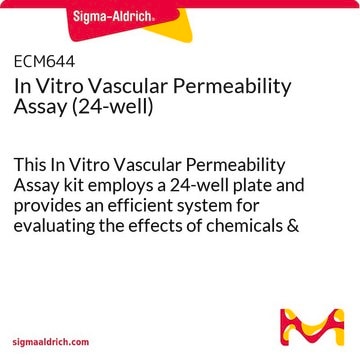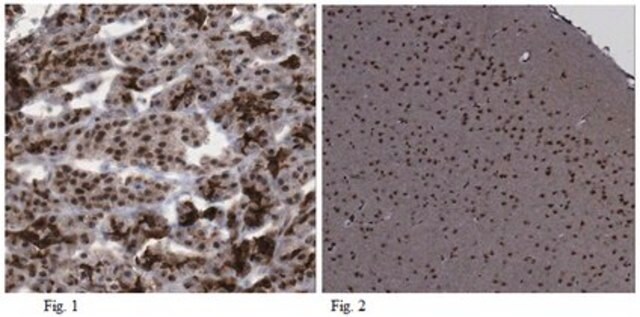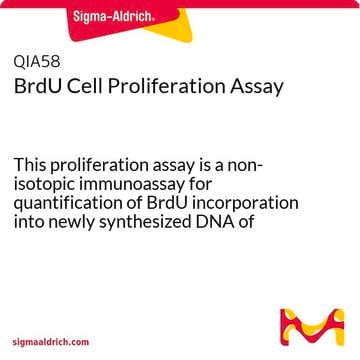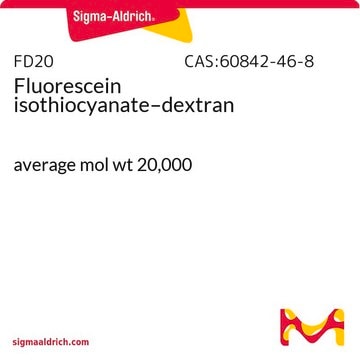ECM642
In Vitro Vascular Permeability Assay (96-well)
This In Vitro Vascular Permeability Assay kit employs a 96-well plate, and provides an efficient system for evaluating the effects of chemicals & drug compounds on endothelial cell adsorption, transport & permeability.
Synonym(s):
Endothelial cell model for permeability assay
Sign Into View Organizational & Contract Pricing
All Photos(2)
About This Item
UNSPSC Code:
12352207
eCl@ss:
32161000
NACRES:
NA.32
Recommended Products
Quality Level
species reactivity (predicted by homology)
all
manufacturer/tradename
Chemicon®
technique(s)
cell based assay: suitable
detection method
fluorometric
shipped in
wet ice
Application
Research Category
Cell Structure
Cell Structure
The Millipore® In Vitro Vascular Permeability Assay kit provides an efficient system for evaluating the effects of chemicals and drug compounds on endothelial cell adsorption, transport, and permeability. It is ideal for measuring compounds that may disrupt or protect an endothelial monolayer. Each In Vitro Vascular Permeability Assay Kit contains sufficient reagents for the evaluation of 96 samples. The In Vitro Vascular Permeability Assay Kit is intended for research use only, not for diagnostic or therapeutic applications.
Components
96-Well Permeability Insert Assembly, Collagen-coated: One 96-well receiver tray containing 96 connected porous cell culture inserts pre-coated with type I rat-tail collagen.
Receiver Tray, 96-Well: Two 96-well plates.
FITC-Dextran Solution: Two vials containing 250 µL.
Cell Stain: One bottle containing 10 mL.
Black Plate, 96-Well Opaque: One 96-well plate.
Receiver Tray, 96-Well: Two 96-well plates.
FITC-Dextran Solution: Two vials containing 250 µL.
Cell Stain: One bottle containing 10 mL.
Black Plate, 96-Well Opaque: One 96-well plate.
Storage and Stability
Store kit materials at 2-8°C; use within 4 months from date of receipt. Do not freeze.
Legal Information
CHEMICON is a registered trademark of Merck KGaA, Darmstadt, Germany
Millipore is a registered trademark of Merck KGaA, Darmstadt, Germany
Disclaimer
Unless otherwise stated in our catalog or other company documentation accompanying the product(s), our products are intended for research use only and are not to be used for any other purpose, which includes but is not limited to, unauthorized commercial uses, in vitro diagnostic uses, ex vivo or in vivo therapeutic uses or any type of consumption or application to humans or animals.
Storage Class Code
10-13 - German Storage Class 10 to 13
WGK
WGK 2
Certificates of Analysis (COA)
Search for Certificates of Analysis (COA) by entering the products Lot/Batch Number. Lot and Batch Numbers can be found on a product’s label following the words ‘Lot’ or ‘Batch’.
Already Own This Product?
Find documentation for the products that you have recently purchased in the Document Library.
Customers Also Viewed
You-Hong Cheng et al.
PloS one, 12(11), e0187949-e0187949 (2017-11-11)
Recent evidence suggests that chemokine CXCL12, the cognate agonist of chemokine receptors CXCR4 and ACKR3, reduces thrombin-mediated impairment of endothelial barrier function. A detailed characterization of the effects of CXCL12 on thrombin-mediated human lung endothelial hyperpermeability is lacking and structure-function
Peng Sun et al.
The Journal of pharmacology and experimental therapeutics, 382(3), 266-276 (2022-07-03)
Diabetic nephropathy is a leading cause of end-stage renal disease, characterized by endothelial dysfunction and a compromised glomerular permeability barrier. Dysregulation of the angiopoietin 1 (ANGPT1)/angiopoietin 2 (ANGPT2) signaling axis is implicated in disease progression. We recently described the discovery
Mohammad Shoeb et al.
Environmental research, 180, 108900-108900 (2019-11-13)
Inhalation of welding fume (WF) can result in the deposition of toxic metals, such as manganese (Mn), in the brain and may cause neurological changes in exposed workers. Alterations in telomere length are indicative of cellular aging and, possibly, neurodegeneration.
Kibbeum Song et al.
European journal of pharmacology, 869, 172891-172891 (2019-12-27)
The blood-brain barrier (BBB) is a highly selective permeability barrier that separates the circulating blood from the brain and extracellular fluid in the central nervous system (CNS). The BBB is formed by cerebral endothelial cells connected by tight junctions. Prion
Guo-Xiang Ruan et al.
The EMBO journal, 31(7), 1692-1703 (2012-02-14)
Herein, we report that vascular endothelial growth factor A (VEGF-A) engages the PI3K/Akt pathway by a previously unknown mechanism that involves three tyrosine kinases. Upon VEGF-A-dependent activation of VEGF receptor-2 (VEGFR-2), and subsequent TSAd-mediated activation of Src family kinases (SFKs)
Articles
Cell based angiogenesis assays to analyze new blood vessel formation for applications of cancer research, tissue regeneration and vascular biology.
Our team of scientists has experience in all areas of research including Life Science, Material Science, Chemical Synthesis, Chromatography, Analytical and many others.
Contact Technical Service










